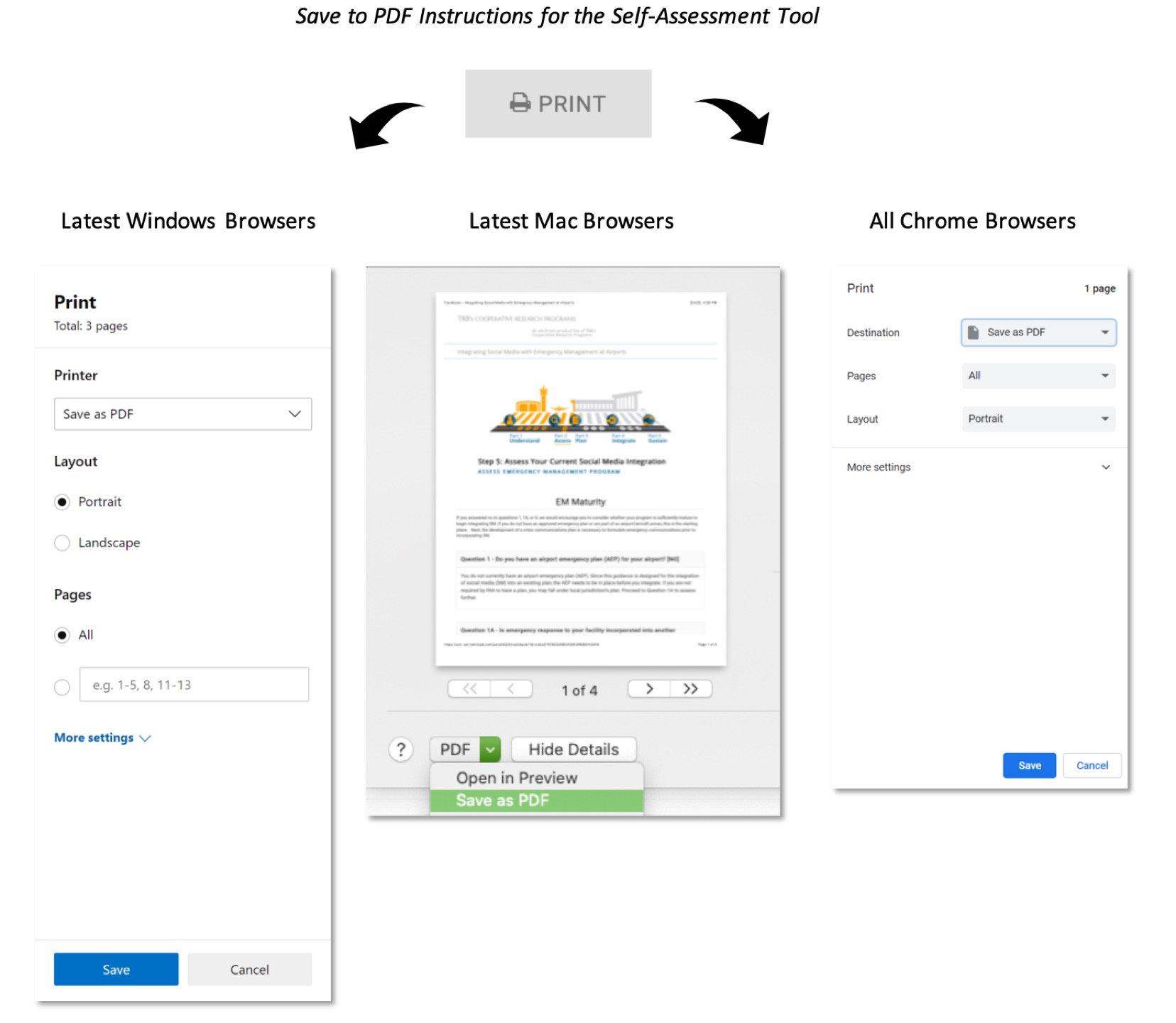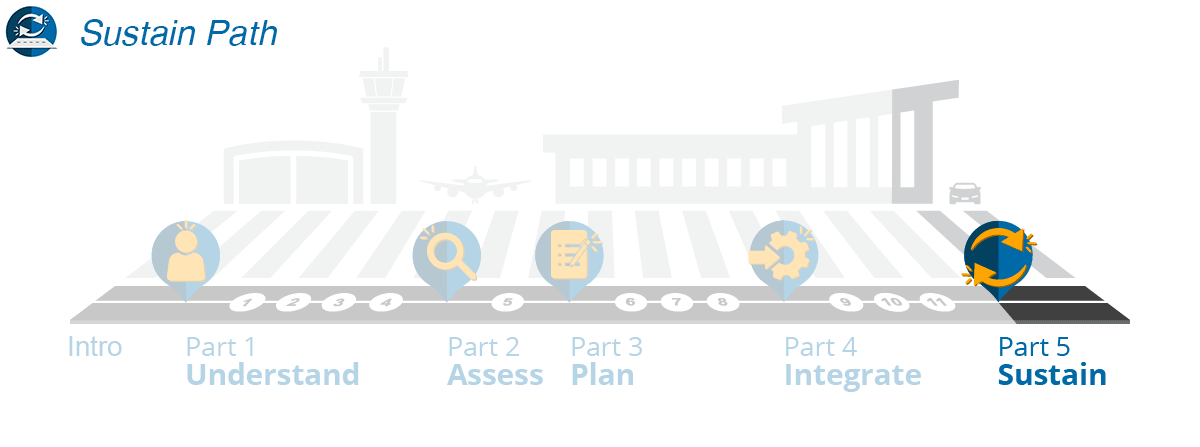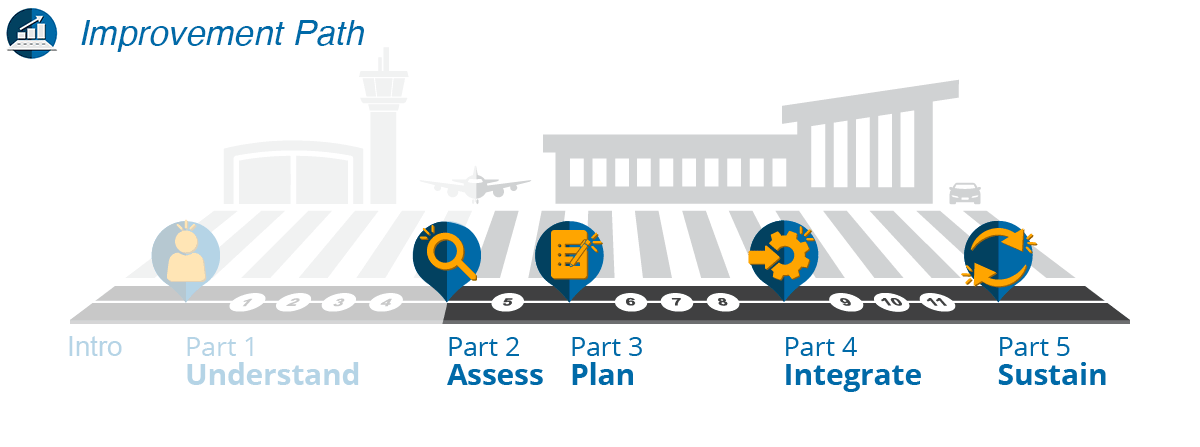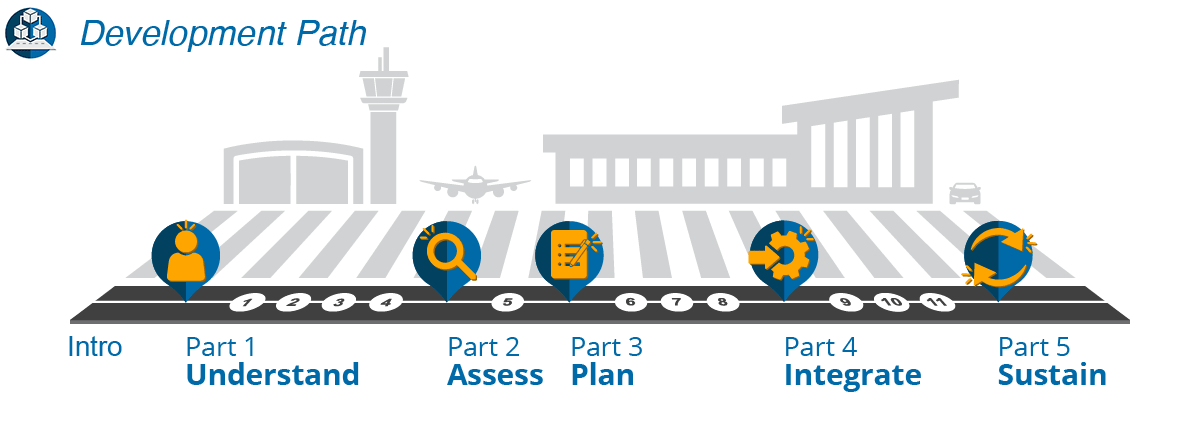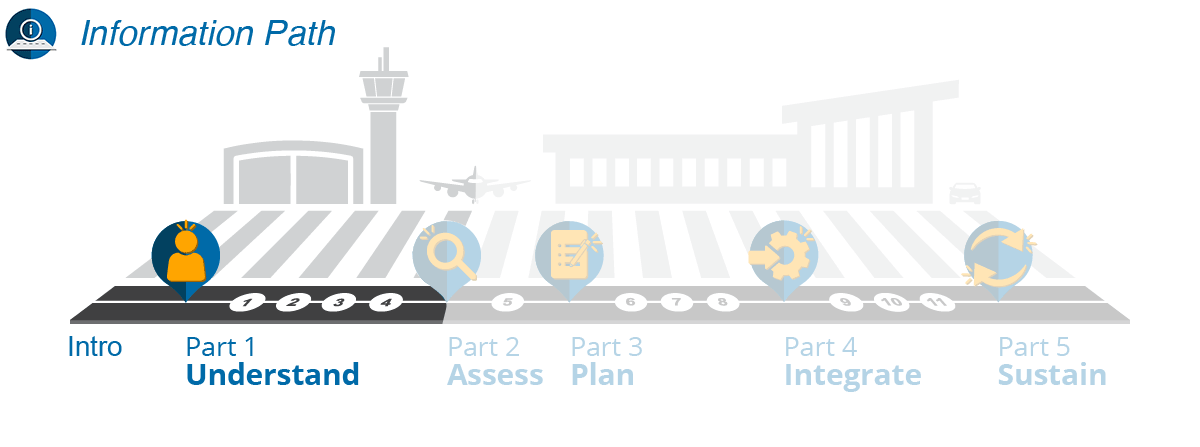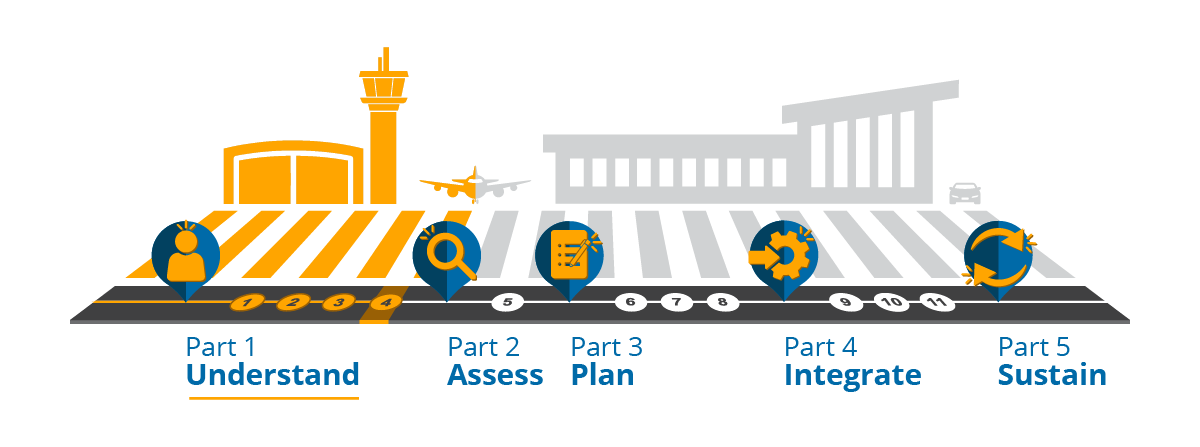
Step 4: Understand the Challenges of Using Social Media in Emergency Management
Collaboration
Although stakeholder collaboration is clearly a benefit of an SMEM program (see Step 3), achieving this collaboration can pose challenges for some airport operators. Perhaps the greatest reason for this is a hesitancy of internal and external stakeholders to really collaborate with others. This is especially true when it entails sharing critical information via SM channels and/or tools. Although in some cases it may not be intentional, some stakeholders have a tendency to stay siloed and ignore how interconnected an issue really is. The following have been challenging in achieving stakeholder collaboration:
- Identifying all the relevant stakeholders
- Building trust among stakeholders
- Understanding how to secure information
- Negative biases toward SM
Identifying All the Relevant Stakeholders
Identifying all the stakeholders who should be involved is a foundational element of SMEM collaboration; yet for many, this can be challenging. One challenge that arises internally is that airport emergency management (EM) personnel typically do not have a working relationship with or personal knowledge of SM staff members and their goals and operations. Another challenge arises when EM response at airports involves non-airport EM managers and response teams from local, state, or federal levels. Many of the federal agencies already use SM to support their response efforts, yet airport EM staff have found it difficult to discover the appropriate federal SM contacts with which airport SM personnel can connect. This connection is key to communicating accurate and timely information to one another (often with many agencies in many locations) and the public at large.
Refer to the section on identifying the whole community in Step 6 for information on how to better define stakeholders.
Building Trust Among Stakeholders
Traditionally, EM responders have not depended on airport SM staff for information during response efforts. For this reason, EM responders may not always see value in the information SM staff members can offer responders during emergency events. It is important that EM staff understand that, with the right program in place, SM professionals can provide reliable and vetted information to EM staff and responders. The efforts taken to build an SMEM program will provide many opportunities to communicate with these stakeholders, build relationships, and seek common goals and objectives. By implementing the program and broadcasting the benefits, you will build and maintain stakeholder trust.
Industry Example
Minneapolis–St. Paul International Airport found it challenging to get its SM, Public Information Officer (PIO), and EM staff to use SM collaboratively in emergency situations. The airport's solution was to integrate the PIO into the EM unified command structure, physically locating the individual near the SM manager in the joint information center (JIC). The airport then conducted JIC training and exercises that enabled the SM, PIO, and EM staff to discover ways to simplify the approval processes for the public-facing SM messaging. Training with one another enabled the teams to work through various SM and EM issues together and gain trust in and support for each other.
Understanding How to Secure Information
Maintaining a safe and secure response environment is of the utmost importance; critical components to this are information gathering (also known as intelligence) and sharing. Without these components, responders and the public are forced to make decisions without adequate information. However, responders find it challenging to identify what information can and should be shared on public or even private SM channels. It is also difficult to distinguish what incoming information can be trusted, especially information from SM. In emergency response efforts, you need to strike a balance between the following notions:
- Wrong information can be worse than no information
- Slightly inaccurate information can be better than no information
Although both statements have merit, neither applies to every situation. To address this challenge, you should work with your stakeholders to develop protocols and plans for identifying what channels can be used securely and what information can be shared and trusted.
To counteract inaccurate information and inadvertent information sharing, you could consider developing guidelines for sharing specific types of information and how to manage messaging when inaccuracies arise. Some airport operators have found it helpful to develop a vetting process and protocols for working with various agencies and elected officials to ensure a consistent message and to avoid misinformation among various organizational entities.
As recommended by the Local Government Association of South Australia in its Managing Social Media During Emergencies Guide, you should also create a list of SM/public affairs contacts at various external response organizations and agencies to develop a network of credible information sources before an emergency event.1 For example, Dallas Fort Worth Airport's PIO and SM staff formed a private Facebook group for sharing information and ideas and supporting one another.
Negative Biases Toward Social Media
Airport operators may encounter pushback from EM or response personnel about sharing information through SM. This pushback may come especially from personnel who do not immediately see SM’s value as an emergency response enhancer or as a business tool that assists in managing the airport brand. Overcoming these negative biases requires time to educate staff, build trust, and ultimately establish buy-in. This can be accomplished in many ways, such as sharing presentations on the benefits of SMEM, publicizing any positive results, and reporting on how SMEM has resulted in early detection or an expedited recovery.
REFERENCES
1. Managing Social Media During Emergencies Guide, Local Government Association (LGA) of South Australia, prepared for LGA by Sarah Bishop, Activate Consulting (Adelaide: 2016), p. 11. (note: the author of this publication has removed the PDF file since this WebResource referenced it)
